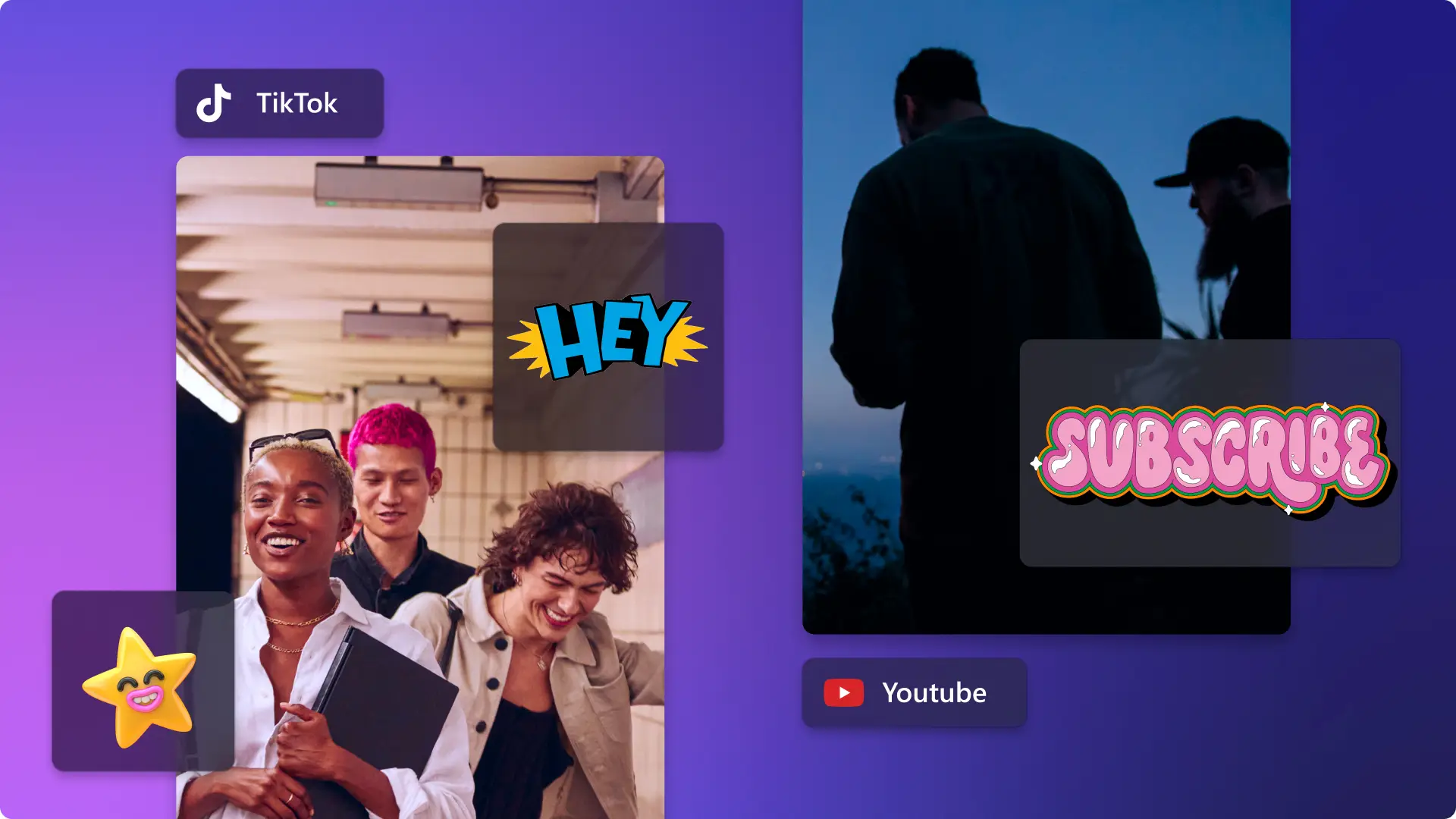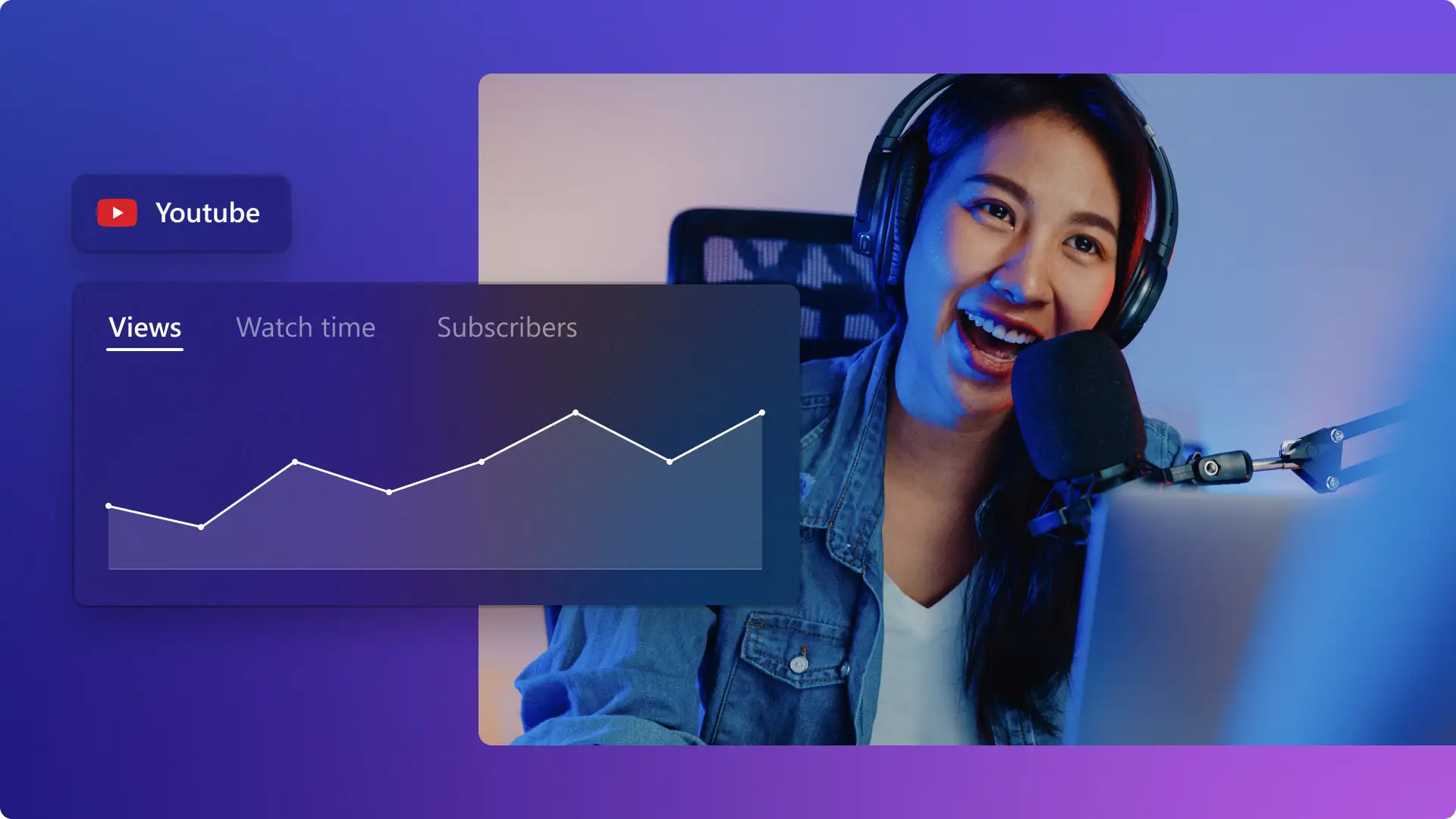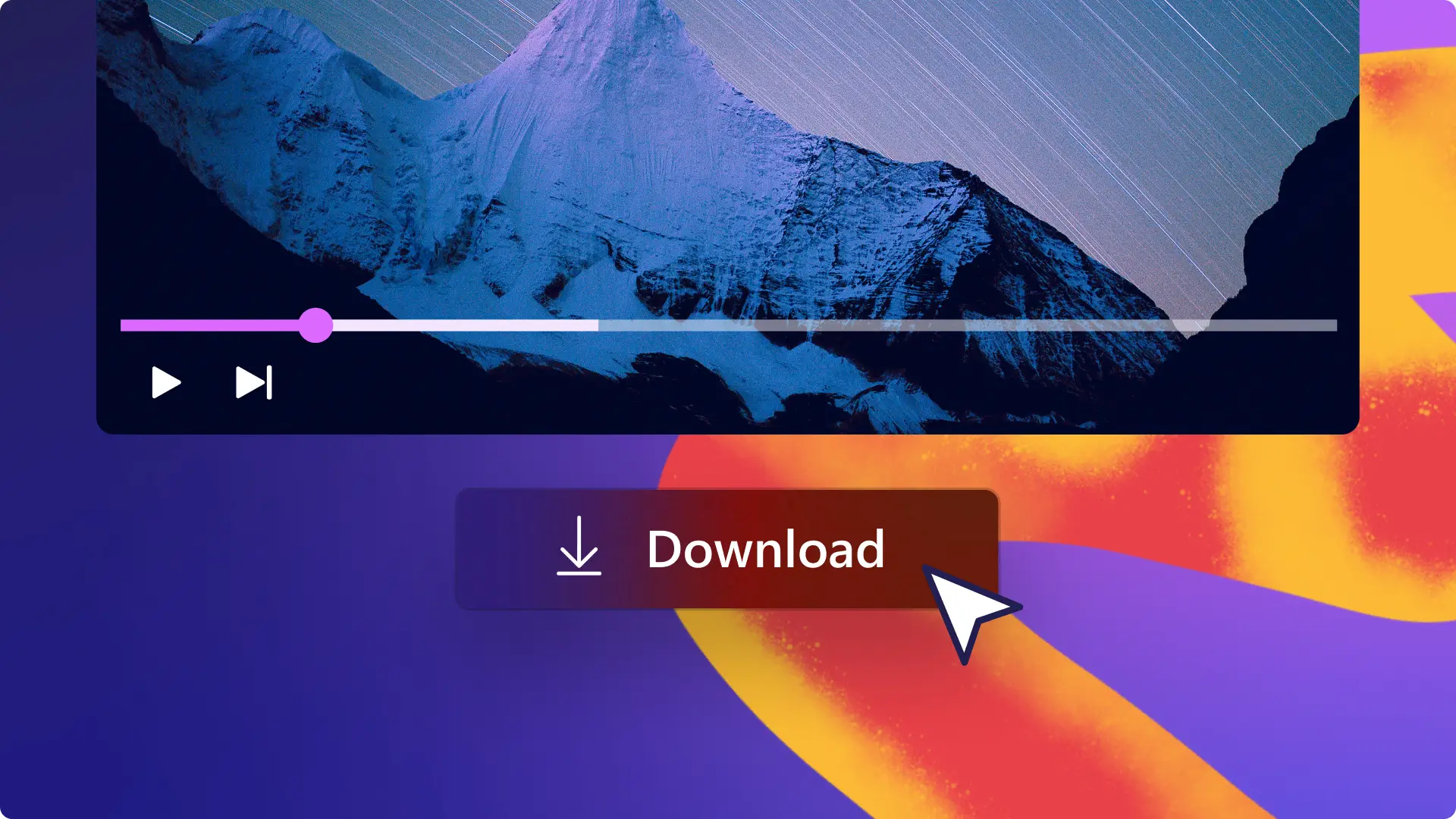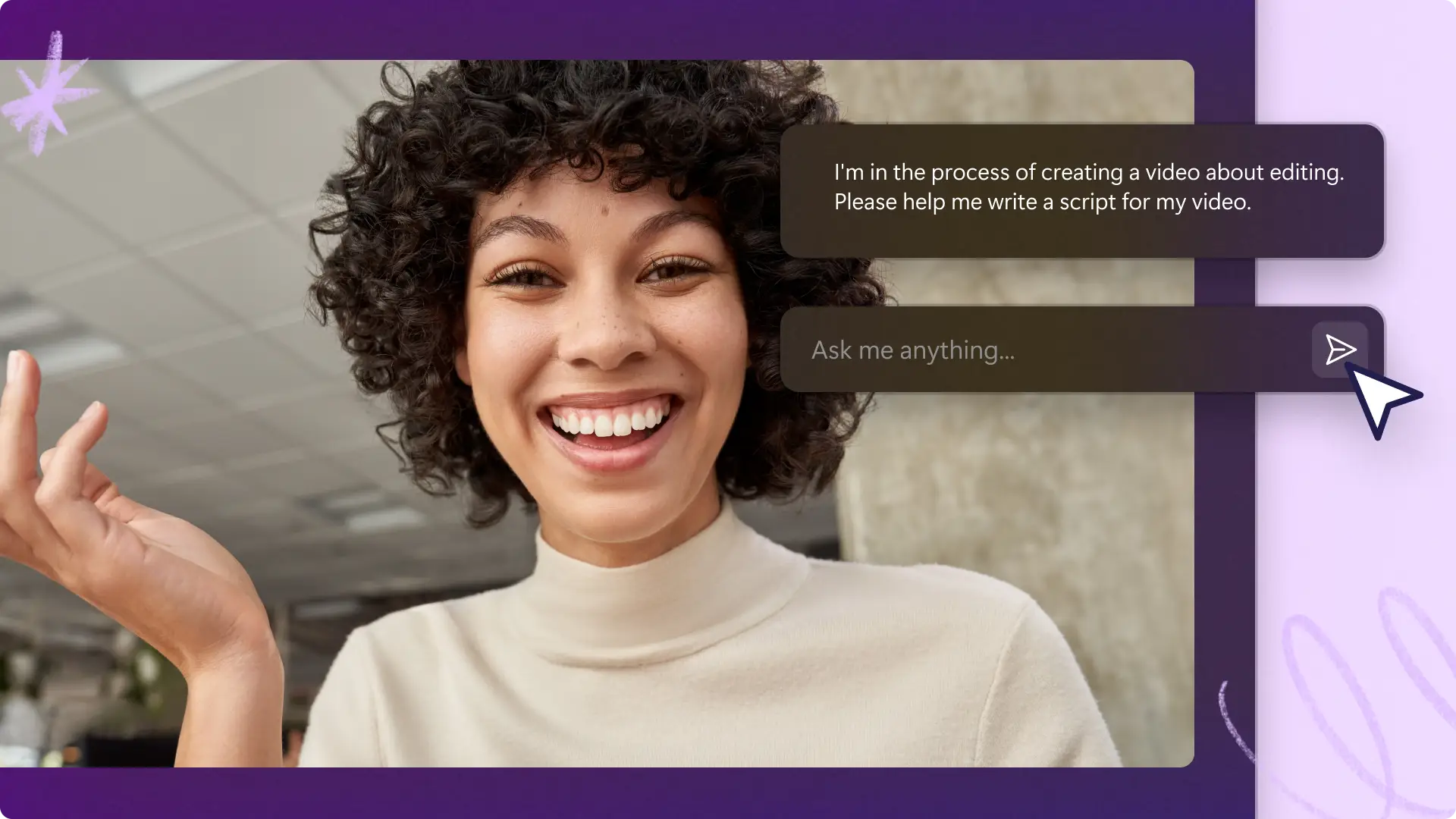Heads up! The screenshots in this article are from Clipchamp for personal accounts. The same principles apply to Clipchamp for work and school accounts.
TikTok and YouTube collectively generate billions of daily views, likes, and shares, and are extremely popular platforms amongst all generations. From the boomers to Gen Z, TikTok and YouTube have taken over the social media industry and the way consumers watch videos. But which video-sharing platform brings the most value to creators? Let us find out through Clipchamp’s helpful TikTok vs YouTube comparison.
What is TikTok?
If you have never heard of TikTok before, it is a short-form video sharing app that lets creators share videos about absolutely any topic and express their very own unique aesthetic. From expressing thoughts, feelings, and opinions, to singing, dancing, comedy, lip-syncing, challenges, and hauls, creators have the freedom to reach a huge community all around the world in just a few minutes.
Unlike YouTube, TikTok videos have a 9:16 vertical aspect ratio, usually short, unpolished clips, and can be recorded and edited directly inside the app. Users can share in-feed videos, story videos, slideshow image videos, and even publish video ads. Although TikTok is used to create bite-sized passive content, brands can also use it to increase brand awareness.
What is YouTube?
On the other hand, YouTube is a free video sharing website and app that is well-known for its long-form, widescreen, 16:9 aspect ratio videos. From popular genres like ASMR, video podcasts, tutorials, comedy, and more, YouTube lets creators, businesses, and users have creative freedom if it fits into YouTube’s guidelines. Creators can find their niche, create an engaged community, and even make money on YouTube.
The differences between TikTok and YouTube
1. Watch-time and length
One of the most significant differences between YouTube and TikTok videos is how long the user watch-time is. TikTok creators can share videos between 15-second and 10-minutes long, but YouTube gives creators the ability to share up to 15-minutes or unlimited for verified accounts. Creators can also share short-form YouTube videos called Shorts as they generate a longer shelf life than regular video content.
If you would like to share longer videos on TikTok, you can also upload and share multiple parts. This is a TikTok hack, but also can potentially increase your account engagement.
2. Audience
Both TikTok and YouTube are suitable for all age groups, but YouTube caters for a wider demographic. Your target audience will determine which platform is best suited for your needs. TikTok’s demographic ranges between 10 to 50+ years old, having the highest percentage of users between the ages of 10 and 19. YouTube on the other hand has 95% of users ranging between 18 – 29 years old.
TikTok requires all users to be at least 13 years old to use basic TikTok features, and direct messaging is automatically turned off between the ages of 13 and 15. The app lets parents activate restricted mode for younger audiences. Like YouTube, where creators can add age restrictions on videos to censor content for users under the age of 18. YouTube also offers a more contained environment for kids to explore videos under the YouTube Kids app.
3. Income
One of the most frequently asked questions is if making money is a possibility on TikTok and YouTube. The short answer is yes. From paid ads to affiliate links, creators can leverage their social network and make real money in just a few taps.
No matter the size of your YouTube channel, brands are always on the lookout for new YouTube marketing opportunities. Subscribers trust creators’ opinions and can learn about new products faster than ever before. Creators can generate revenue by adding affiliate links for products or services in uploaded content and sponsored videos. YouTube pays creators directly their earnings through the YouTube ad revenue. But this will only work if YouTube videos are monetized.
TikTok also offers an affiliate marketing technique where brands can sponsor creators to post tutorials, review videos, and unboxing videos to gain more reach, sales, and brand awareness. Creators who live in the U.K (United Kingdom)., U.S (United States)., Germany, Italy, France, and Spain can also accept gifts through the mobile app from viewers and can become a part of TikTok’s Creator Fund if a profile has over 10,000 followers and has accrued at least 100,000 video views in the last 30 days.
4. Music
Both TikTok and YouTube let creators add royalty-free background music to videos without copyright claims. A copyright claim can appear when creators use well-known audio without the artist's permission. But if you’re looking to use popular soundtracks, you’ll get a copyright claim on your YouTube upload, risking your video being demonetized, hidden, and even deleted.
TikTok, however, lets creators use trendy songs and audio in videos without any penalties. If you are looking to create original sounds like text to speech voiceovers, TikTok is also the app for you. TikTok gives creators the opportunity to use original sounds, use other creators sounds, popular trending artist songs, and even film directly in the app. You can also follow TikTok trends to expand your reach. We recommend using TikTok if you want to avoid copyright claims and create videos using trending sounds.
5. Shareability
When it comes to planning, uploading, and sharing video content, both social media platforms let creators save draft videos to their account. This gives creators the opportunity to batch create content and upload them for easy sharing. Once creators have published videos, YouTube and TikTok both also give you the option to make videos private, without deleting them from your account. Either platform is suitable for content creators.
6. Captions
Adding captions to your videos is one of the easiest ways to make them more accessible and easier to follow when muted. Both TikTok and YouTube can automatically generate subtitles for your videos using their smart AI technology. But if you are looking for auto-captions with a downloadable SRT file and timestamped transcript, head over to our auto-captions feature.
7. Analytics
Having the ability to view your account analytics gives creators the perfect insight into what’s working, what needs to be improved, demographics, and view counts. Both YouTube and TikTok share personalized analytics with creators, but YouTube lets you view competitor analytics as well.
8. Live streams
YouTube and TikTok both have a live stream feature for all creators to enjoy. There is not one better than the other as your views are determined by your demographic and discoverability. TikTok does however have a unique livestream button to view trending live streams easily, giving users a better opportunity to find active livestreams. Some creators also like to share short livestreams on TikTok like GRWM, car chats, and more.
9. Discoverability through search
Both platforms let creators add SEO and hashtags to video captions to increase discoverability. But when it comes to recommending similar content to users through the algorithm, TikTok seems to have the power over YouTube. YouTube does recommend related videos to viewers from other creators, but TikTok suggests faster via For You Page (FYP). TikTok is actively increasing video discoverability and is improving their searchable element of videos to connect with user interests.
10. Video editing requirements
There is no surprise that TikTok videos are easier and faster to create than YouTube videos. TikTok's are shorter, more authentic, and do not hold an expectation for well-produced content like YouTube does. YouTube requires a desktop editor as video clips are usually larger in size, widescreen not portrait, and include professional intro and outro video template.
You might be thinking that TikTok is better to use for creators as it’s more time efficient and requires less editing, but it’s harder to create a trending video. Unlike YouTube, where you can stick to the one style of video making.
11. Community
Communities thrive on both TikTok and YouTube. Viewers introduce their most watched creators to their friends, family, and don’t ever gatekeep their entertainment. Whether it’s via TikTok shares on the app or sending a YouTube video link via text message, viewers can become loyal advocates of your accounts. But if you’re going to put yourself out there on TikTok, be prepared to read some interesting comments. Moderating comments, adding filters, and community comment rules are a wonderful way to keep comments positive. YouTube has a more filtered comments section naturally over TikTok, embracing kindness, support, and mostly positive feedback.
Frequently asked questions
Will TikTok defeat YouTube?
Both video platforms are similar, but quite different at the same time. TikTok might gain more attention from viewers as the bite-size content is easier to consume, but YouTube offers long-form, unique style videos.
Is it easier to grow on TikTok or YouTube?
Yes. If your target audience is younger, then TikTok is the right platform for you. TikTok is also a lot easier to gain exposure faster, but building a community on YouTube has more monetization opportunities.
Is TikTok or YouTube better for pay per view?
TikTok pays between $0.02 - $0.04 per 1000 views. On average, YouTube pays $18.00 per 1000 views.
Should I post on YouTube and TikTok?
Yes. If you would like to broaden your audience and generate more views and engagement, we recommend sharing video content on both YouTube and TikTok.
YouTube vs TikTok? You decide. Whether you’re creating bite-sized content or long-form videos, no matter which platform you choose, both give enormous opportunities for success. And with the help of Clipchamp’s free online video editor, you can start creating and sharing trending TikTok videos today.
To learn more about competing platforms, look at our TikTok vs Instagram Reels blog.



